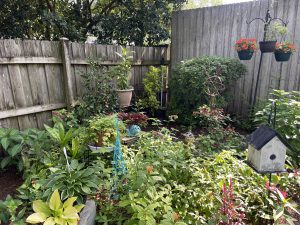
Plants should be looking good in full growth. If our yard has a well-balanced ecosystem, pests and diseases are usually minor. Birds need caterpillars to feed their young. Bees and butterflies are busy gathering nectar and pollen while they are pollinating our plants, including our vegetable garden. Our yards are part of a wider ecosystem.
But what if your plant looks bad, what’s bugging it? Often the issue is a bit more complicated than just more water or less. There are environmental factors and pests that can affect our plants. In order for pests and diseases to become a problem on a plant you need three things to occur.
- a susceptible host plant,
- a favorable environment for the pest or disease and
- the presence of a pest or disease.
Commonly known as the pest/ disease triangle.
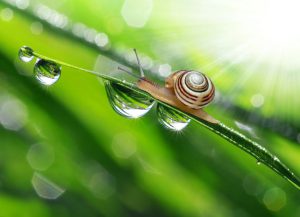
As master gardener volunteers, we first look at the environment in determining what’s wrong with a plant. Too much or too little water, too much sun or not enough sun, and an inappropriate plant for the location are some of the things we look for.
This includes plants that grew great up north, but struggle or die in our heat and humidity, with too little winter chilling.
Full sun is defined as 6 hours of sun which can mean afternoon shade or high filtered shade in Florida. Other things to look for are incorrectly applied insecticides or herbicides or too much fertilizer. More is not better; you have to read the insecticide label and apply it correctly.
After ruling out the environment and/or cultural practices, we look for pests or pathogens. A stressed plant is more susceptible to infection. Holes in the leaves mean something is chewing on the plant. Look early in the morning or late evening or night to find the culprit.
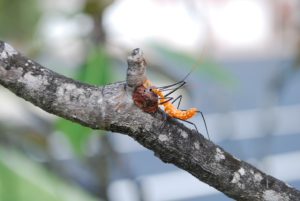
You can pick them off and drop in soapy water or isopropyl alcohol or put in a plastic bag and freeze them or crush them and put in the garbage. If there is a pest outbreak, look for beneficial insects. For example, Brenda writes, I had an outbreak of small round brown snails that were eating a lot of my plants. Later I found another snail that was conical and initially thought double trouble, but upon observing that he was not near holes, I researched and realized a rosy wolf snail had come to feast on the other snails.
Another time I was cutting off the tips of aphid infested guara flower stalks and noticed a different bug, I didn’t recognize. It was an instar stage of a ladybug beetle that was feasting on the aphids! Insect stages of development can look completely different than the adult stage we are used to seeing.
Discolored leaves can be a fungi or virus. A fungus infection can be treated and is sometimes a side effect of an insect’s excretions. Viruses in plants are not treatable, either dispose of a virus infested plant or tolerate discolored leaves or flowers.
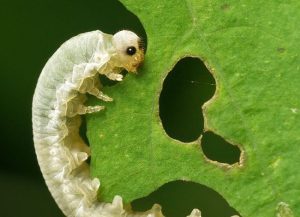
An internet research technique we use is to enter a brief description of the problem, the plant, and sometimes other descriptor words such as “spring” into a search engine along with the letters “IFAS” (shorthand for Institute of Food and Agricultural Sciences). This will help you get University of Florida based research. Additionally, you can also search https://edis.ifas.ufl.edu/ . For research-based information look for the .edu extension in the web address. Other land grant universities in the southeast may have appropriate information also.
A request we get at the Extension Office is for information on natural or organic insecticides. Please identify the pest before treatment, because you don’t want to kill beneficial insects. Also, follow the directions on the package, as incorrect application of natural and organic products can still be harmful. For information on natural products for landscape pest control, go to: https://edis.ifas.ufl.edu/publication/IN197 .
So, if you are finding that your landscape is having pest problems, instead of looking for a chemical to spray, perhaps a better solution may be found by evaluating the planting site, using the right plant in the right place, scouting for beneficial insects, and looking for research- based solutions to your landscape problems.
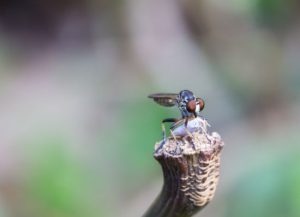
This article was written by Duval County Master Gardener, Brenda Daly. It first appeared this month in the Florida Times Union on Saturday, Jun 3, 2023.
 2
2
